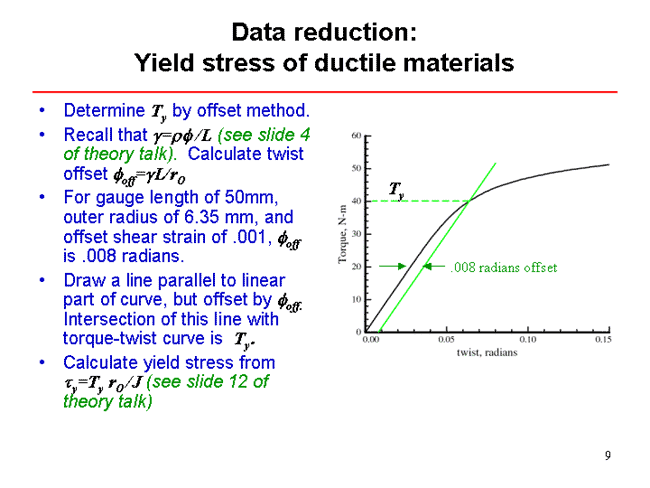



![]()
![]()
1
2 3 4
5 6 7
8 9 10
Printable
PDF of this presentation
|
Slide 9 For the ductile materials we can determine the initial yield stress from the torque-displacement curve. The material yields when it begins to undergo permanent deformation. This permanent deformation is accompanied by nonlinearity of the torque-twist curve. Defining the exact onset of nonlinearity and hence onset of yielding can be difficult. Thus as a practical approach, engineers often use the offset method. The offset method is usually stated in terms of strain. In this method a line is drawn parallel to the linear part of a stress-strain curve, but displaced to the right by 0.1 to 0.2% strain. The stress where this line intersects the stress-strain curve is then deemed to be the yield stress. In this lab we do not measure strain directly – we measure twist. To use the offset method, an offset twist must be defined consistent with the offset strain idea. Here we have chosen to reduce the offset to 0.1% shear strain. Using the relation between strain and twist we can calculate an offset twist. For example, for a gauge length of 50mm and outer radius of 6.35mm, the offset twist that is equivalent to 0.1% offset strain is .008 radians. The intersection of the offset line with the torque-twist curve gives the torque at yield, about 40 N-m in the example shown. Once the yield torque is known, the yield stress can be computed from tau yield equals yield torque times outer radius of gauge section divided by polar moment of inertia, J. |
|
Chalk
Talks Virtual
Tests Test Data Lab Manual |
